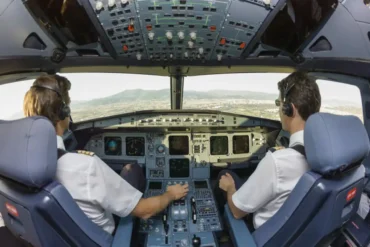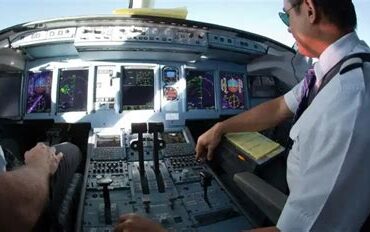Hey there! Let’s chat about retractable landing gear. While it’s great for speed and fuel efficiency, it can sometimes be a bit tricky. But don’t worry – even when things go wrong, we can learn a lot from these situations.
Sometimes landing gear problems pop up out of nowhere during landing, but other times, pilots spot issues before touching down. This gives them a chance to figure things out and come up with a plan.
Between 2003 and 2023, there were 321 incidents involving landing gear in both regular and commercial flights. Some of these were “wheels-up” landings. The good news? Most of these incidents didn’t result in serious injuries, which shows that even in tough situations, people often come out okay.
A lot of these incidents happened because of human error, often due to distractions. It just goes to show how important it is to use checklists and do thorough pre-landing checks to avoid these kinds of problems.
Real-life Stories: What We’ve Learned
Let me tell you about Don Gordon, a pilot from Melbourne. Years ago, he had to do an emergency belly landing in a twin-engine plane at Moorabbin Airport. The gear wasn’t working right, and he couldn’t tell if it was down or not. Don’s advice? Stay calm and think things through step by step when you’re in a tough spot.
Then there’s Ron Logan, an experienced instructor who had a wheels-up landing during a routine flight from Aldinga Airfield. Even though he missed some warning signs and tried to fix the problem, Ron acted quickly and worked with ground services to make a safe emergency landing.
As Ron was coming in to land, he ran into more trouble with the plane’s flaps. He thought it might be an electrical issue. He decided to make an emergency landing at Aldinga, showing how important it is to think on your feet and follow safety procedures.
Both Don and Gordon’s stories show us how important it is to keep your cool, solve problems systematically, and communicate well when things go wrong in the air. These real-life examples remind us why it’s so important to be prepared and make clear decisions to keep everyone safe.
Ron even managed to pull off what you might call a perfect belly landing, even though he couldn’t use the flaps. That’s not something you can easily learn from a book or manual!
When pilots talked about these experiences, they said they felt focused and calm while getting ready for the emergency. They relied on their training and followed procedures to handle these scary situations.
When the planes touched down, what started as a normal landing quickly became intense. The pilots described it like this:
- At first, it felt like a regular landing, but then they heard scraping sounds near the back door as the plane slowed down.
- It was kind of like slamming on the brakes in a car.
- They could still control the plane a bit, but it was hard to keep it going straight.
The Tricky World of Retractable Gear Problems
Landing gear is a lot like your shoulders or hips – it’s complicated and has lots of parts that can go wrong. From one part not working to the whole system failing, there are many reasons why landing gear might malfunction.
Problems can range from electrical issues to problems with hydraulic lines. This shows how many different challenges pilots might face when dealing with landing gear troubles.
To make things even trickier, different types of planes have different landing gear systems. This means pilots have to think fast about things like weather, runway conditions, and how much fuel they have left when facing a wheels-up landing.
Smart Ways to Handle Emergency Situations
A pilot friend of mine likes to talk about having an “Absolom moment” when things get tough. This refers to Jack Absolom, an Australian TV personality known for thinking creatively in tricky situations. While pilots can’t exactly stop for a cup of tea mid-flight, taking a moment to gather your thoughts and come up with a plan is super important.
Looking at real-life stories and reports about aviation incidents, we can see that there are key things pilots should think about when dealing with landing gear problems. It’s crucial to keep an emergency mindset and remember that keeping people safe is more important than saving the plane.
Dealing with Landing Gear Issues
If you run into landing gear problems while coming in to land, it’s best to abort the landing, adjust the plane’s setup, check your fuel, and talk to air traffic control for help or advice. Keeping an emergency mindset helps you focus on the most important tasks and keep passengers safe.
It’s important to check circuit breakers, switches, and make sure nothing’s blocking controls like levers or cables. Don’t hesitate to call the operator or maintenance team for advice if you need it.
Make sure to check the plane’s manual for instructions on how to extend the landing gear in an emergency.
Getting the landing gear down in an emergency can be tough and physically demanding. For example, on a Bonanza, you might need to turn a handle about 50 times, while on a GAF Nomad, you’d have to pump a lever 140 times. While doing this, you still need to fly the plane, watch your fuel, and stay aware of what’s going on around you.
When You Can’t Fix the Landing Gear
If you can’t fix the landing gear problem, focus on the most important tasks, like landing with the gear in the wrong position. See if you can get someone else to help with some tasks to make things easier.
Think about whether it might be better to land at a different airport with better conditions or emergency services. Check how much fuel you have and weigh the pros and cons of staying put versus going somewhere else.
Pilots usually said the touchdown felt normal at first, but then the plane skidded to a stop.
Think about different landing gear positions and whether it’s safer to land with some wheels down or none at all. Consider any parts of the plane that might affect how it lands, which could impact your control and stability.
Make sure the plane’s body, control surfaces, and your approach are set up for the safest possible landing. Think about things like your approach speed, angle, and where you’ll touch down to reduce risks from the gear problem.
Look at the runway – how long is it? What’s it made of? Are there any hazards like wet grass or bumps that could cause problems? Familiarize yourself with emergency procedures so you can quickly and safely get everyone out of the plane if needed.
Do a final check to make sure your landing plan is safe and makes sense. Talk it over with others if you can to refine your strategy.
Planning Your Landing
If you have to do a wheels-up or partial wheels-up landing, careful planning is key. Use any extra time you have to come up with a strategy and ensure a safe descent. It’s like finding a shady spot to sit and plan your next move in a tough situation.
A Great Example of Handling Landing Gear Failure from ATSB:
On November 11, 2014, a Cessna 210 (registered as VH-JGA) ran into landing gear trouble during a scenic flight over Green Island and Arlington Reef from Cairns Airport. When the pilot tried to lower the landing gear, the left main gear wouldn’t lock in place. The pilot decided not to land and tried again.
After trying everything they could think of, including calling for help from the ground, the pilot got ready for a wheels-up landing. They told the passengers what was happening and had them get into a safe position. The plane touched down on the grass next to runway 33. The plane was badly damaged, but amazingly, no one was hurt!




